Participants
Cameron M. Pittelkow (Principal Investigator), Crop Sciences
Laura E. Christianson (Co-PI), Crop Sciences
Rabin Bhattarai (Co-PI), Agricultural & Biological Engineering
Gary Letterly (Cooperator/Collaborator), Environmental and Energy Stewardship Educator, the University of Illinois Extension

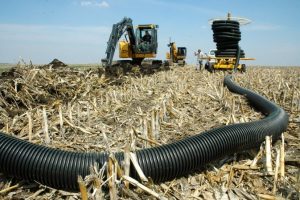
Photo credits: Corn (USDA NRCS, Ron Nichols, North Carolina), Tile Drainage (sdcorn.org)
Summary
The overall goal of this project is to create and apply knowledge about sustainable agricultural systems for Illinois farm communities using an integrated research and outreach approach. In light of recent recommendations by agricultural conservation stakeholders to address nutrient loss concerns (e.g., USDA NRCS, IL NLRS, cooperative extension, conservation groups), we will generate and communicate new information about best practices for balancing nutrient management, water quality, and corn production goals in Illinois. Specifically, we will establish a multidisciplinary field experiment to examine in-field and edge-of-field water quality practices and will use observed field data and modeling to scale up results and facilitate statewide discussions about how to best address nutrient loss concerns.
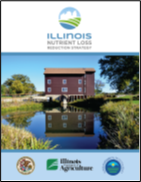
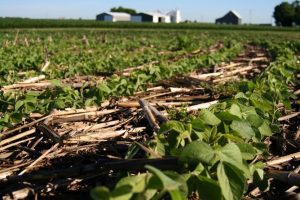
Photo credits: Illinois Nutrient Loss Reduction Strategy (IL EPA), Soybeans (USDA NRCS Illinois, Paige Buck)
Background
To achieve ambitious statewide nutrient loss reduction goals, the Illinois Nutrient Loss Reduction Strategy (NLRS) was recently released with recommendations focused on combining water quality best management practices (BMPs) such as improved nutrient stewardship, cover crops, and bioreactors to decrease nitrate losses from agricultural fields, particularly through tile drainage. However, there remains limited scientific evidence on the effectiveness of these practices, implemented alone or in combination, in Illinois corn production systems. In addition, it is often not considered by scientists and policy-makers that increased efforts to reduce nitrate losses may come at the cost of other environmental impacts. Illinois is not alone in facing these challenges – balancing production goals with environmental costs is a major issue that agriculture is struggling to address globally.
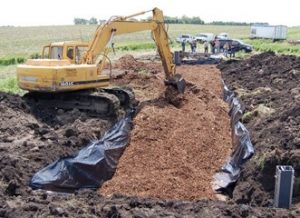
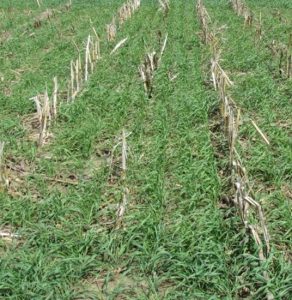
Photo credits: Bioreactor installation (Iowa Soybean Association/LE Christianson), Cover crop (Iowa Learning Farms)
Objectives
In this project, we will establish a sustainable intensification research site at the Dudley Smith Farm with the initial aim of evaluating the combined effects of water quality BMPs on tile drainage nutrient losses, nutrient use efficiencies, and crop yields. Field data will be combined with modeling efforts to scale up results and facilitate statewide discussions about how to best address nutrient loss concerns. Extension and education events will be conducted at the Dudley Smith Farm to engage the primary benefactors of this research, including crop producers, agricultural consultants and retailers, and state agricultural and environmental agencies. In the short term, this work will help identify best practices for achieving sustainability goals in Illinois crop production systems, particularly related to reducing tile drainage nutrient losses. In the long term, this research platform will serve as a valuable resource for the Illinois agricultural community, facilitating the development of new knowledge and technical solutions and helping attract external funding for multidisciplinary agricultural systems research.
Project Resources
Fact Sheets
- Within-field drainage flow and nitrogen loading variability following tile drainage installation
- Support for long-term field research and outreach boosts agriculture in Illinois
Status Updates
- 2016 Annual Report
- 2017 Annual Report
- 2018 Annual Report
- 2019 Annual Report
- 2020 Annual Report
- 2021 Status Update
Presentations
Papers (published/unpublished)
- Combining Environmental Monitoring and Remote Sensing Technologies to Evaluate Cropping System Nitrogen Dynamics at the Field-Scale
- In-season Split N App and Cover Cropping Effects on Nitrous Oxide Emissions in Rainfed Maize
- Split-N App with Cover Crop Reduces Nitrate Losses while Maintaining Corn Yields
- Assessing the concept of control points for dissolved reactive phosphorus losses in subsurface drainage
- Runoff and drainage trade-offs from cover crops exposed to freeze-thaw events
- Aspect Ratio and Baffles Impact Hydraulic Performance of Full-Size Denitrifying Bioreactors
- High-Frequency Bromide Sensor Performance during Denitrifying Bioreactor Tracer Testing
- Investigating tradeoffs in nitrogen loss pathways using an environmental damage cost framework